|
|
VIP Communicator - Automated Data Systems Inc.
| 1978 |
The VIP
COMMUNICATOR - The world's first hand-held pocket-sized TTY is
introduced. |
Note - Looking for more
info to add to this section. If you were involved with the company
feel free to tell some history. Many thanks Ed Sharpe Archivist
for SMECC info@smecc.org
|
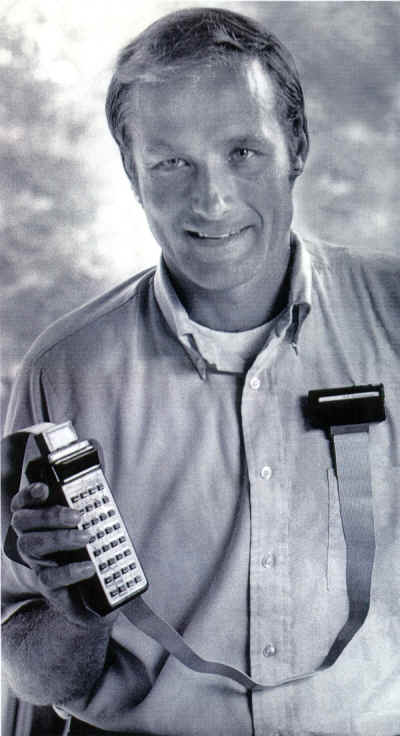
Rob
Engelke
VIP Creator
(Photo courtesy of Ultratec
Inc.)
|
__________________________________________
In 1978, Robert Engelke, the founder of Ultratec, was an electrical engineer
designing devices to help people with communication disorders. Through his
friend Herb Pickell, a prominent member of the Wisconsin deaf community at the
time, Engelke became interested in improving text communications for individuals
who are deaf. The name of the first company was 'Automated Data Systems
Inc.'
In the 1970s, TTYs cost between $650 and $1000, making them a luxury item that
very few could afford. Working out of the basement of his home, Engelke developed
a low-cost TTY that people could use more easily. The company's first TTY was the
V.I.P. Communicator, a TTY the size of a pocket calculator.
Engelke went to his first National Association of the Deaf (NAD) Convention in
1978, meeting with people to ask questions and test ideas. He asked TTY users to
evaluate his work, and made changes based on their comments (a process that
continues at Ultratec today).
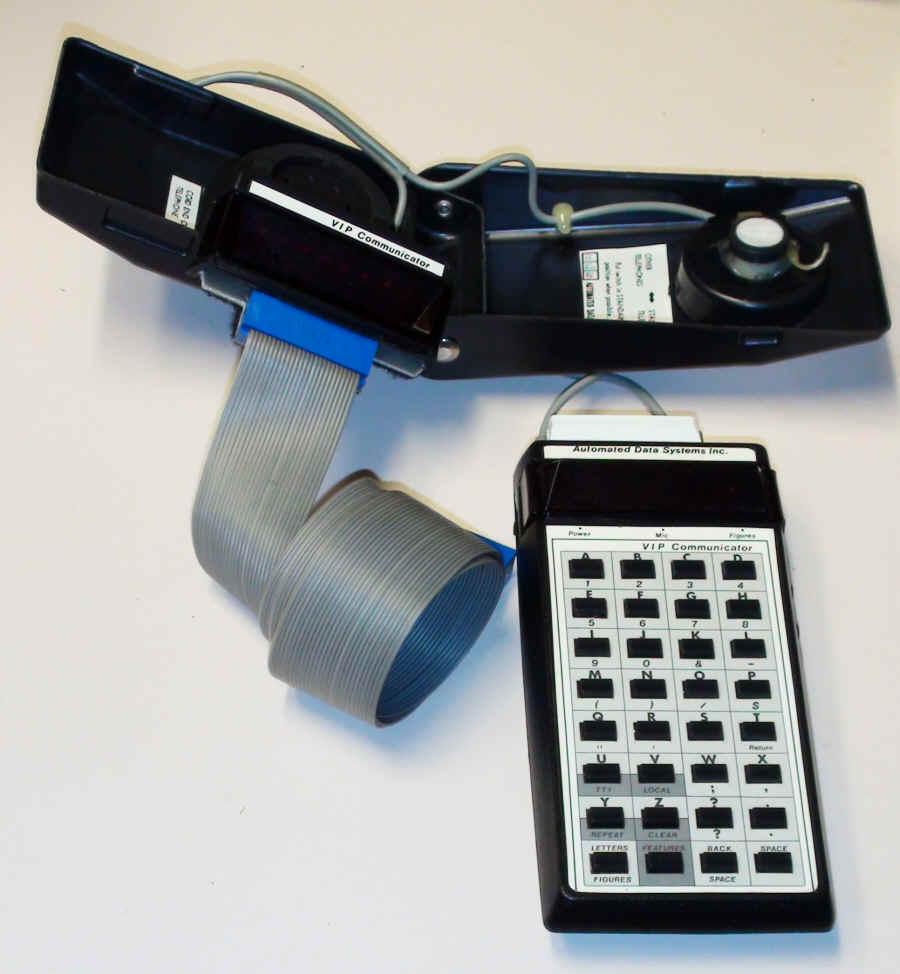
The VIP Communicator – one of the first TTYs
produced by Robert Engleke - when the company was called Automated
Data Systems. Hand-held, the VIP Communicator also included a
little display you could clip onto your shirt that showed words as you
typed so another person could view the conversation also!.
Shown here, the acoustic coupler is shown in the open position ready to accept
a phone handset. From the Zimet/Black Collection
at SMECC - Photo (c) SMECC
|
|

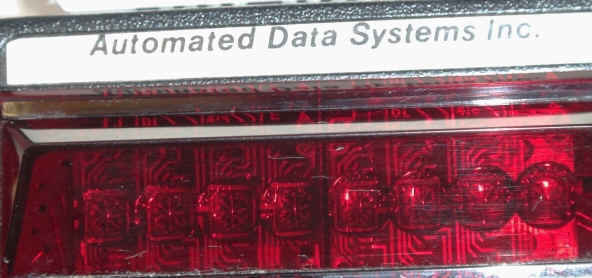
The VIP Communicator – one of the
first TTYs produced by Robert Engleke - when the company was
called Automated Data Systems. At right- Close-up of
LED display From the Zimet/Black Collection
at SMECC - Photos (c) SMECC
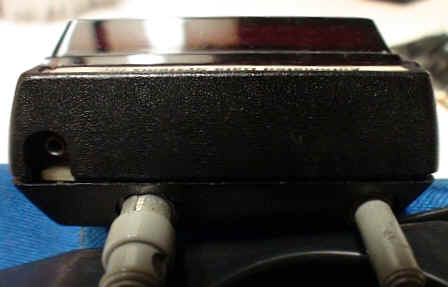

At left- Close-up shows this
second example does not have the top case opening to attach
the 'Talking Pocket' attachment. At right-
The VIP is ready to travel with coupler...
all of it fits into a nice belt pouch! From the
Gene Rankin Collection
at SMECC - Photos (c) SMECC
|
|
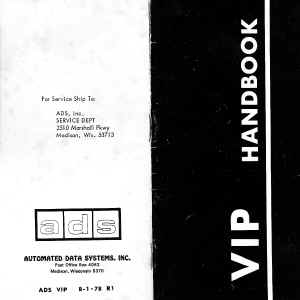
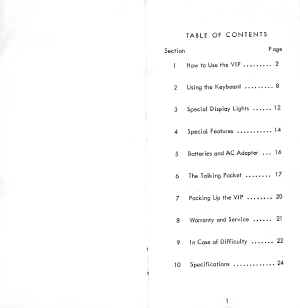
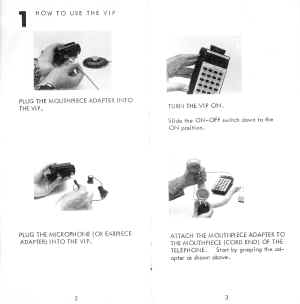
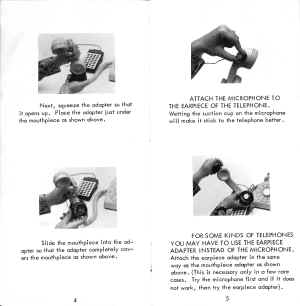
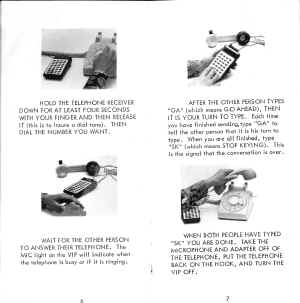
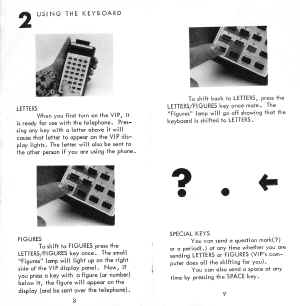
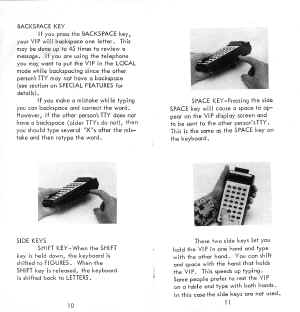
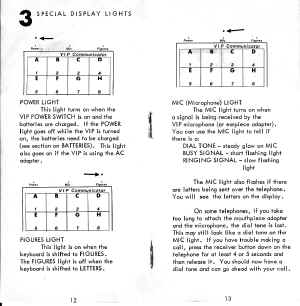
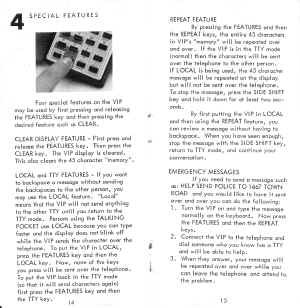
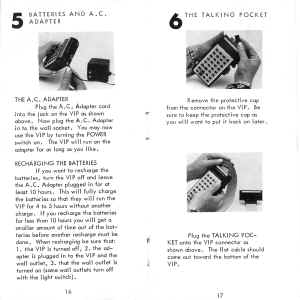
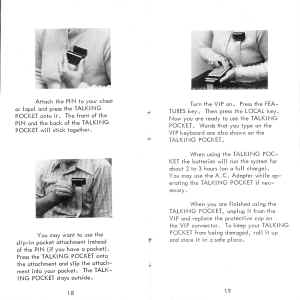
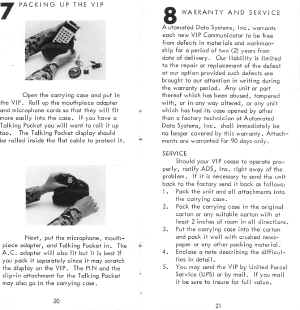
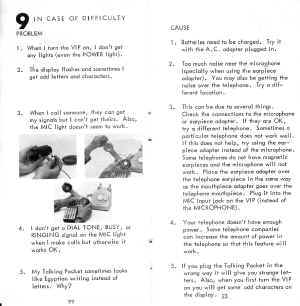
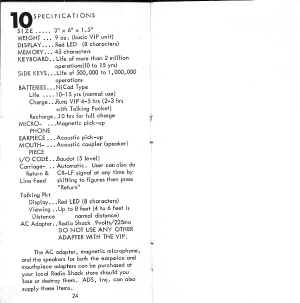
Manual for the he VIP Communicator
– From the Zimet/Black Collection
at SMECC
|
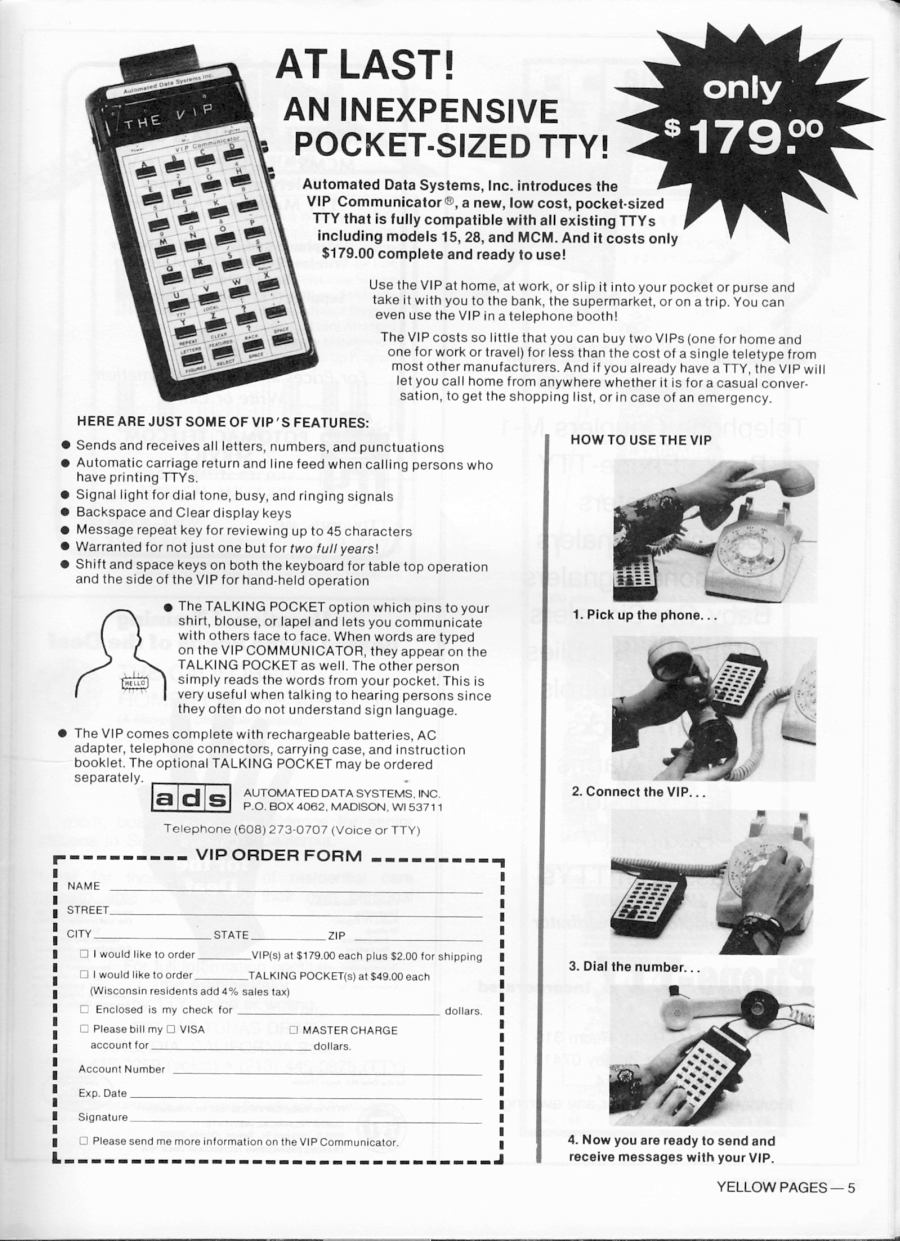
TDI 1978-1979 International Telephone Directory of
the Deaf from the Paul and Sally Taylor Collection at
SMECC
|
Rob
Engelke VIP creator in his own words, sign-interpreted.
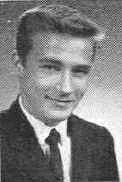 Rob Engelke
- At reunion time- Rob Engelke
- At reunion time-
Great to see all of the stories and find out what
"really" happened to friends and classmates for the past 40
years! Looks like just about everyone's had a great time, although I
am terribly sorry to see the names of those that have already slipped
away (glad to know that Mary Wright is insisting she HAS NOT YET
slipped away - way to go Mary - please keep it that way). And thanks
for the great website, Bob! A lot of WORK and we appreciate it!
After getting my degree from UW Madison in Electrical Engineering, I
married my wife, Sue, and for 10 years, we both worked at the
University. I worked for several departments including the Space
Astronomy Lab (worked on "space capsules" as they were known
in those days), and later with the TRACE Center which is a
rehabilitation engineering center that designs assistive communication
devices for persons with severe, multiple communicative disorders
(kids with CP and retardation and deaf-blind people for example).
While there, I became interested in ways that deaf people could use
the telephone and after several years working in the area, started a
little company in my basement to make "TDDs" (basically
small typewriter-like devices that deaf people use to communicate over
the phone by "typing" to each other). Now, after 25 years,
the Sue and I are still with the company (Ultratec.com) which has
grown quite a bit and is located in the University of Wisconsin
Research Park where we make, among other things, Susie and I have
two sons, Christopher (after spending a year as a student and teacher
in Katmandu Nepal, is currently finishing up his Anthropology degree
at Arizona and then off to grad school), and Timothy (currently a
junior at UW Madison in Political Science). All happy, and doing fine!
(from the 'net-date?)
|
Deaf-communication pioneer to receive honorary degree
May 3, 2012
by David Tenenbaum - University of Wisconsin
(with permission)
On May 18, Rob Engelke, chief executive officer of Ultratec,
Inc., will receive an honorary doctorate at a commencement ceremony
at the Kohl Center on the UW-Madison campus.
Engelke was cited for creating extraordinary advances that have
enabled deaf and hard-of-hearing people worldwide to communicate via
telephone.
In the 1970s, Engelke was building computers and selling them to
campus researchers. At about the same time that Apple’s founders
were making computers in the garage, Engelke had already moved on.
Realizing that deaf people could not use the telephone, he
decided to make a teletypewriter that could communicate via text.
Although some deaf people were using clunky, costly teletypewriters
cast off by newspapers, their supply was finite.
In 1977, Engelke founded Ultratec and began building a miniature,
microprocessor-based teletypewriter (TTY) that plugged into a
regular phone line. The $150 device allowed deaf people to converse
with anybody else who had a TTY, including the government agencies
and emergency services that began buying from Ultratec.
Ultratec, unlike Apple, did not become a worldwide brand, but it
did revolutionize telecommunications for the deaf in about 15
countries.
By listening to his customers in the deaf community, Engelke
created two privately held firms that account for about 900 jobs at
the University Research Park in Madison and a total of about 2,000
nationwide.
It’s not about the designer, Engelke says.
“People cannot care less about what is inside the box,” he
says. “It’s a mantra here: ‘Don’t talk about what you think
you can do, listen to what people need. Then figure out how to get
that to happen.’”
Having survived radical changes in the technological landscape --
including ubiquitous texting on phones and computers -- Ultratec
continues to demonstrate that you can do well by doing good.
And it all started with listening.
Engelke was born and raised in Madison. His father was principal
of Nakoma Elementary School, and his mother worked as a clinical
psychologist after her kids were grown.
“We never had a new car, never had money to spare, but we were
not starving,” he says.
As a teenager, Engelke worked at Central Colony, the predecessor
of the Central Wisconsin Center for the Developmentally Disabled,
and “got an initial exposure to the idea that not everybody had
the same range of talents and abilities.”
After getting a bachelor of science degree in electrical
engineering from UW-Madison in 1968, Engelke did technology work for
the psychology department and began building computers -- until he
met some deaf people and recognized the difficulty of life without a
telephone.
Working in his basement, Engelke figured out how to place a
miniature TTY inside the plastic housing of an early electronic
calculator. As Ultratec’s small, affordable TTYs began selling,
they attracted the attention of Gregg Vanderheiden, director of the
Trace Center on campus, which, then and now, advocates accessibility
for emerging technologies.
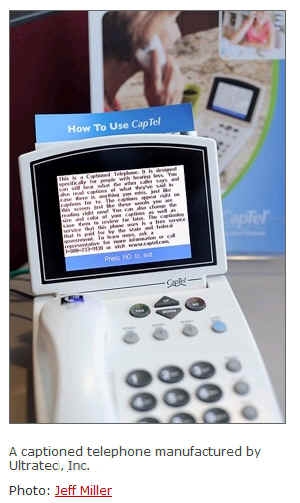 “Today,
Ultratec is the premier company internationally in the area of deaf
telecommunication,” says Vanderheiden, a longtime friend.
“Not only did Rob reinvent (the TTY), he also invented an entirely
new form of communication for individuals who are hard of hearing,
called captioned telephony.” “Today,
Ultratec is the premier company internationally in the area of deaf
telecommunication,” says Vanderheiden, a longtime friend.
“Not only did Rob reinvent (the TTY), he also invented an entirely
new form of communication for individuals who are hard of hearing,
called captioned telephony.”
That business has grown into CapTel, a separate company that,
like Ultratec, is also based in the research park. When a person
with a hearing impairment uses CapTel, a “communications
assistant” repeats the other party’s words so they can be
interpreted by voice-recognition software. The assistant quickly
corrects the automatic text, and a verbatim transcript is then
routed to a screen on the user’s phone.
The service is free to users and supported by small fees on
telephone bills.
CapTel works like a TTY when a deaf person calls a hearing
person, providing the best of both worlds to millions more who have
some hearing, but find phone calls challenging. Because these users
hear the voice, the emotional content of the conversation is much
richer, but they still get to read any undecipherable words.
CapTel has been a revolution, says Engelke, and it now employs
about 700 people in Madison in a five-story building next to
Ultratec’s factory.
Engelke says he “was floored” to learn that UW-Madison has
recognized his record of humanitarian and engineering success.
“I think it’s a wonderful honor that I share with everybody
who helped bring this about; clearly this is due to the efforts of a
lot of people,” he says.
One of them is Pamela Young-Holmes.
“She’s the kind of person who walks into your life and
changes it,” Engelke says. “In 1987, she came in to complain:
Her TTY wasn’t working, and we needed to be more careful about
quality. I talked to her [Engelke is adept in American Sign
Language], said that things do fail, but we fix them. I asked right
there if she would consider working for us … and she now directs
our consumer and regulatory affairs and customer service for CapTel.”
According to Young-Holmes, “Rob is one of those rare,
extraordinary men in life who has already left a footprint on earth
far greater than his shoe size… Rob has put his heart, soul and
brilliant intellectual mind to work for tremendous impact on the
lives of so many others.”
Ideas come from all directions, and the problem-solving engineer
never seems to be in “pause” mode. Watching an interviewer
speed typing, he asks what technology is in use, and wonders whether
it could be incorporated in a possible product for people who, like
Helen Keller, are blind and deaf.
Admittedly, this is a tiny market with essentially no profit
potential, but Engelke does a judo takedown on this “can’t do”
logic.
“We don’t expect to make money on this, but if we don’t
make it, who will?” he asks.
Engelke is married to Susan, who is chief financial officer at
Ultratec.
Both of their children have signaled an interest in working with
Ultratec. Timothy, a lawyer, wants to get involved in business
operations and in the advocacy and regulatory areas that affect the
deaf and hard of hearing community. Christopher is experimenting
with a communication strategy for “locked-in” people who have
neurological problems and must communicate with agonizingly slow
movements of facial muscles.
The invention, Engelke says, produces such an obvious
acceleration in their speech that the test subjects are demanding,
“We've got to have this right now.”
Having read this far, you know where this is going. Christopher
“is calling on Ultratec to produce a device,” Engelke says
approvingly.
Basically, Engelke isn’t much interested in ideas that don’t
have a social purpose.
“We’ve got more than enough to do,” Engelke says.
"If it was all about making money, I suppose there would be
temptations for spin-off products, but that’s business for
business’s sake, and that is not what we are interested in
doing.”
|
| |
ULTRATEC Inc. Technology Timeline
Our experienced engineers continually look for new ways to make text
telecommunication more convenient and affordable, eliminating barriers to
the phone through technology. Many of the capabilities you enjoy everyday
with your TTY are Ultratec inventions.
|
| 1978 |
The VIP COMMUNICATOR - The world's first hand-held
pocket-sized TTY is introduced.
(Company was Automated Data
Systems at that time) |
| 1980 |
Ultratec introduces the SUPERPHONE - The world's
first TTY with memory, ASCII code, voice output, and touch-tone
input. |
| 1981 |
Ultratec introduces the world's first low-cost,
full keyboard TTY, the MINICOM, making TTYs affordable to tens of
thousands of people who are deaf or hard of hearing. |
| 1982 |
Ultratec introduces the MINIPRINT - The world's
first low-cost, printing TTY.
Ultratec welcomes Dr. Robert H.
Weitbrecht, inventor of the
first TTY and renowned physicist, to its engineering staff.
Ultratec introduces the first portable braille TTY for persons
with both visual and hearing loss.
|
| 1983 |
Ultratec introduces the MINICOM II - An enhanced,
extremely low-cost TTY that quickly becomes the market leader.
Ultratec introduces the WATCHMAN SIGNALING SYSTEM - A low cost,
flexible family of signalers for alerting people with hearing loss
to telephone ring and other household sounds.
|
| 1984 |
Ultratec introduces the
INTELE-TYPE - The first
portable 80-column printing TTY with upper/lower case letters,
sophisticated multiple memory features, and auto answering.
Ultratec introduces the INTELE-MODEM - An
ASCII/Baudot
converting modem that allows home computers and ASCII terminals to
communicate with TTYs.
Ultratec collaborates on the TELEBRAILLE - A second portable
braille TTY with advanced features and greatly reduced size and
cost.
|
| 1985 |
Ultratec introduces the SUPERPRINT SERIES - The
first modular, upgradeable series of printing TTYs with memory,
auto-answer, ASCII, and human engineering to simplify training and
use.
Ultratec makes a significant technical breakthrough with
ENHANCED ACOUSTIC RECEPTION SYSTEM (E.A.R.S.) which greatly
reduces compatibility and reception problems that have plagued
users for years.
Major telephone companies including Illinois Bell, General
Telephone of California, Michigan Bell, Southern New England
Telephone, Hawaiian Telephone, Alberta Government Telephone,
Ameritech Services, Southern Bell, Bell South Services, and
Manitoba Telephone choose Ultratec as their supplier of TTY
equipment.
|
| 1986 |
Ultratec develops the MINICOM III and IV series of
low-cost TTYs with expanded features and better improved factors.
Ultratec develops the VOICE ANNOUNCER which tells the person
receiving the call that a TTY is being used. This innovation
reduces the risk of mishandled emergency calls and gives the TTY
user a positive method of indicating the nature of the call.
Ultratec continues to expand its service network across the
United States and Canada, and begins establishing sales and
service facilities in South America and Europe.
|
| 1987 |
Ultratec introduces the
SUPERCOM, the first
low-cost fully featured TTY.
Ultratec introduces the TDD DETECTOR, a device that connects to
the telephone line to detect incoming TDD/TTY tones so that
emergency service agencies will respond appropriately.
Ultratec begins manufacturing TTYs that communicate in numerous
languages and codes for use in countries throughout the world.
Ultratec introduces the first public access TTY, the PAY PHONE
TDD (PUBLIC TTY), capable of being installed in pay phone booths.
|
| 1988 |
Ultratec develops the first LARGE VISUAL DISPLAY
for TTY users who are visually impaired.
Ultratec introduces the SUPER SIGNAL SYSTEM, the first
comprehensive system that alerts the user to all of the sounds in
his or her home with addressable modules.
Ultratec invents and patents VOICE CARRY OVER and HEARING CARRY
OVER (VCO/HCO) for dual party TTY relay systems, whereby a person
may use his or her own voice to speak directly to the other party
through the relay and have the operator relay text in the other
direction.
|
| 1989 |
Ultratec introduces five new models of TTYs
including models designed expressly for use by 9-1-1 and other
emergency providers.
Ultratec expands its operations to Great Britain, establishing
a European sales office whose President and top management are
deaf. Working closely with British deaf groups and British
Telecom, new TTY models are designed to meet the unique
specifications for Great Britain's deaf telecommunications
network.
Ultratec continues to expand its product line to include TTYs
for more than 25 countries, 12 different languages, and four
different telecommunications codes.
Ultratec begins design and planning of its new TECHNOLOGY
CENTER.
In hearings before the California Public Utilities Commission,
Ultratec TTYs are demonstrated to be more reliable and cost
effective by a large margin in comparison to other TTY brands in
California's TTY distribution program, the nation's oldest and
largest distribution program.
|
| 1990 |
Ultratec introduces the COMPACT, a fold-up,
pocket-sized TTY for mobile communications with advanced features
for connecting to computers and information services. This is the
first of several new generation products Ultratec will produce for
the world TTY market.
Ultratec expands its capabilities to include robotic assembly.
Construction begins of the ULTRATEC HEADQUARTERS in the
University of Wisconsin Research Park in Madison, Wisconsin.
Ultratec begins building TTY products for AT&T.
|
| 1991 |
Ultratec is awarded its 21st state distribution
program contract.
Ultratec moves into its new 72,000 square foot barrier-free
CORPORATE HEADQUARTERS AND TECHNOLOGY CENTER facility.
As an employer with over 20% of the staff being persons with
special needs, Ultratec is awarded a $250,000 training grant for
training staff with disabilities.
|
| 1992 |
Ultratec introduces a new series of the PAY PHONE
TDD (PUBLIC TTY). This is a motorized model for use in high
traffic areas. There is also a motorized model designed for
outdoor, all-weather applications.
Ultratec develops AUTO ID. Auto ID is activated when the TTY is
turned on. TTY tones are automatically sent to alert the answering
party, such as emergency service personnel, that it is a TTY call.
Ultratec develops and patents TURBO CODE, an enhanced
communications protocol that allows TTY users to transmit their
words as fast as they type. As long as both TTYs are equipped with
Turbo Code, telephone conversations for TTY users are in
"real-time."
SUPERPRINT 4420, introduced by
Ultratec, is a compact, printing
TTY that offers the most advanced features available in a TTY. The
Superprint 4420 offers a built-in printer with three selectable
print sizes, call progress, optional ASCII, time and date
functions, Auto ID, and Turbo Code.
|
| 1993 |
Ultratec introduces the
UNIPHONE, the first ever
combination TTY, standard telephone with volume control, and voice
carry over TTY. The Uniphone can be shared by people who are deaf,
hard of hearing, or hearing, making it the first universal phone
that everyone can use.
|
| 1994 |
Ultratec introduces new fully-featured SUPERPRINT
4225 for acoustic use, 32k memory, Turbo Code, and convenient
GA/SK keys.
Ultratec announces a new design and new features for its series
of printing TTYs. The new look includes a white and gray
computer-style keyboard with convenient GA/SK and arrow keys. New
model numbers in the series are SUPERPRINT 4425, MINIPRINT 425,
and MINIPRINT 225.
Ultratec introduces the new SUPERCOM 4400, the latest in the
company's line of advanced TTYs. The SUPERCOM 4400 is a
non-printing TTY that includes advanced capabilities such as Turbo
Code, Auto ID, auto-answer, 32k memory, and direct connect
features.
Ultratec expands on Uniphone all-in-one technology to offer
customers a choice between a basic model (UNIPHONE 1000) and an
advanced model (UNIPHONE 1140) with memory, auto-answer, and
dialing directory.
The UNIPHONE 1150, a version of the Uniphone designed
specifically for use in the UK, is tremendously well received in
England.
The Ontario Ministry of Health approves new Ultratec TTYs for
its Assistive Devices Program in Canada. The program, which
included Ultratec products since it first began, now offers over
sixteen Ultratec models to choose from.
|
| 1995 |
Ultratec designs a new low-priced, easy-to-install
shelf-top PUBLIC TTY. The new PUBLIC TTY ST simply bolts to any
existing payphone shelf, making installation quick and easy. While
still vandal-resistant, the new model can be used acoustically so
it can be installed independently of the telephone service
provider.
Ultratec begins designing and producing alpha-numeric paging
products for Motorola, the recognized leader in the rapidly
expanding paging market.
|
| 1996 |
The MINICOM 7000 SERIES of advanced text telephones
is introduced in the UK. Both the MINICOM 7000 and the MINICOM
7000 PLUS feature advanced technology including direct connect,
auto-answer, 32k memory, and a Relay Voice Announcer that tells
hearing callers to phone through the National Relay Service. The
Minicom 7000 Plus also includes a built-in printer.
Ultratec introduces the EZCOM PRO TTY - A simple, low cost,
direct connect only TTY with directory dialing, speed dial Relay
key, an easy to use VCO request key, and a long battery life for
portable use. The EZcom Pro is the first truly portable direct
connect TTY that can be used with a cellular phone and a data
interface.
TURBO CODE and AUTO ID become standard features offered in ALL
Ultratec desktop TTYs.
|
| 1997 |
Ultratec announces the SUPERPRINT PRO80
TTY(tm) -
The most advanced TTY available. Designed for direct-connect use
only, it includes a full-size computer keyboard, extra large
32-character display, and a built-in, full-size 80-column printer
that uses traditionally sized (8 1/2"
wide) thermal paper. CALLER ID capability is included in a TTY for
the first time, as well as customer favorites such as Auto-Answer,
dialing directory, Relay Dial key, Relay Voice Announcer, Turbo
Code, and Auto ID.
|
| 1998 |
Ultratec, Inc. celebrates 20 years of connecting
people with people!
|
|
Ultratec announces two new additions to the
SUPERPRINT PRO80 SERIES. The SUPERPRINT PRO80 GOLD(tm) and the
SUPERPRINT PRO80 LVD(tm) TTYs. Both models boast all of the
features of the standard SUPERPRINT PRO80 plus enhanced display
options and other features.
The SUPERPRINT PRO80 GOLD offers a two-line, 80-character
display for easy reading of conversations and Caller ID
information.
The SUPERPRINT PRO80 LVD offers an impressive built-in Large
Visual Display (one-line, 20-characters) for low vision users. The
Superprint Pro80 LVD model also offers extra large printing
capability in addition to the three print sizes offered in all
Ultratec printing TTYs.
|
|
The COMPACT/C and the EZCOM PRO/C TTYs join
Ultratec's line of products as ideal TTYs for use with analog
cellular or cordless telephones. Ultratec is the first company to
offer wireless TTY access that is easy and more affordable than
previously available on the market.
|
| 1999 |
Ultratec announces the CRYSTALTONE premiere
amplified telephone. CrystalTone gives users flexibility to
customize the sound quality, tone control, and volume level that
they hear best. In addition to offering one of the most powerful
amplifiers available, the CrystalTone includes an extremely loud
ringer, a bright visual ring flasher, and popular phone features
like redial, memory dial buttons and a large, easy-to-see keypad.
|
|
Ultratec introduces its second phone in the
CrystalTone line, the CRYSTALTONE PLUS. This top-of-the-line phone
offers the most powerful amplifier (up to 50dB), a built-in
traditional speakerphone and quality sound enhancement while
screening out background noises.
|
|
Ultratec and Sprint conduct a six-month technology
trial in which Sprint's Telecommunications Relay Service uses
Ultratec's new voice recongnition technology. FASTRAN is intended
to improve the quality of communications for all relay users (deaf
and hard-of-hearing) to communicate by phone.
|
| 2000 |
Ultratec announces a powerful new loud telephone
ringer - the CRYSTALTONE RINGER. The latest in the company's
CrystalTone line of amplified products, the new ringer amplifies
up to 95dB, substantially louder than the volume of a traditional
ring.
|
|
Consumer testing begins on
CAPTEL, or Captioned
Telephone, a new breakthrough that allows people who have
difficulty understanding what is being said over the telephone to
receive live captions of their telephone conversations. CapTel is
the key to making telephone calls functionally equivalent to
traditional voice calls, enabling people who are deaf orhard of
hearing to enjoy telephone conversations with the same ease,
speed, and confidence as telephone callers everywhere.
|
|
Ultratec introduces the new SIMPLICITY SIGNALERS an
attractive system of signalers that turn everyday sounds into
signals that can be seen. Individual units include a variety of
TELEPHONE RING SIGNALERS, DOORBELL SIGNALERS, SOUND SIGNALERS,
REMOTE RECEIVERS and the ADD-ON STROBE. Simplicity also includes
an exclusive wireless doorbell signaler, which uses radio
frequency instead of traditional wires.
|
| |
Ultratec is named International Research Park
COMPANY OF THE YEAR by the Association of University Related
Research Parks. In presenting the award, AURRP commends Ultratec's
leadership in advancing technology, its dedication to quality and
innovation, and its commitment to diversity in employment
practices.
|
| 2001 |
Ultratec unveils its new five-story COMMUNICATIONS
RESEARCH CENTER, the company's third building in the University of
Wisconsin Research Park. This stunning landmark facility is
dedicated to testing and supporting new communications
technologies, including CapTel captioning service.
|
| |
Every Relay in the nation supports Ultratec's
enhanced communications protocol, TURBO CODE. |
| |
Ultratec adds the SIMPLICITY TELEPHONE/DOOR
SIGNALER LTW. This combination signaler provides a cost-effective
way to be alerted to both the doorbell and the telephone. |
| 2002 |
Consumer testing continues on CapTel throughout the
United States, with more and more states conducting consumer
trials over the course of the year.
|
| |
In recognition of its adoption of Ultratec's CapTel
and Fastran technology, the state of Wisconsin receives the NASCIO
Recognition Award for Outstanding Achievement in the field of
Information Technology.
|
| 2003 |
CapTel technology is APPROVED BY THE FCC, enabling
individual states to offer CapTel as part of their relay services.
In announcing the decision, FCC Chairman Michael Powell states
that CapTel “brings important innovation and additional choice
to Americans with hearing disabilities.”
|
| |
Ultratec develops 2-line
CapTel, offering CapTel
users even greater flexibility/control over their own calls.
|
| 2004 |
In January, Hawaii becomes the first state to offer
FULL SERVICE CAPTEL to its Relay customers. Many more states
convert from consumer trials to full service CapTel over the
course of the year. By December, the majority of states,
nationwide, offer full service CapTel as part of their standard
relay service. CapTel service is also available nationwide
through the Federal Relay Service.
|
| 2005 |
Expansion continues at Ultratec's Communications
Research Center as interest and demand for CapTel service
continues to soar.
|
| 2006 |
The FCC approves IP-BASED CAPTEL service, paving
the way for people to receive CapTel captions of their telephone
calls using the convenience of the Internet.
|
| 2007 |
CapTel expands to open a NEW CALL CENTER in
Milwaukee, Wisconsin. Located in the heart of downtown Milwaukee,
the new call center provides expanded service for CapTel users
nationwide, while creating hundreds of job opportunities for local
residents. Milwaukee Mayor Tom Barrett officially opens the new
center.
|
| 2008 |
Both Hamilton Relay and Sprint begin offering
WEBCAPTEL service over the Internet. WebCapTel enables people to
view captions of their telephone calls in their web browser during
their conversations. With WebCapTel, people use whatever telephone
they want - their cell phone, business phone, or home service -
and still view captions of the call on their computer screen. |
| |
|
|
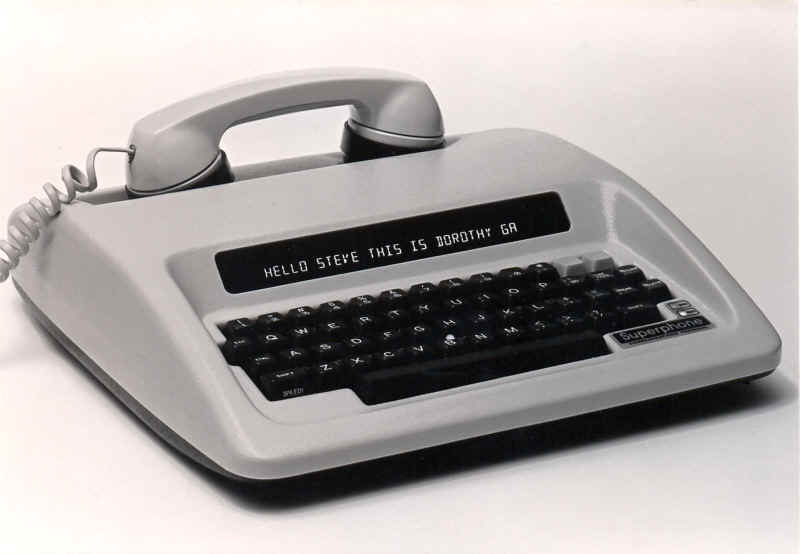
The Superphone – Ultratec TTY released
in the 1980s. It was the first TTY with memory,
ASCII code, voice output, and touch-tone input. (Photo
courtesy of Ultratec Inc.)
In 1980, Ultratec introduced the Superphone - a TTY that for the first
time included memory capabilities and ASCII. Best of all, it cost under $500,
which was a low price at the time.
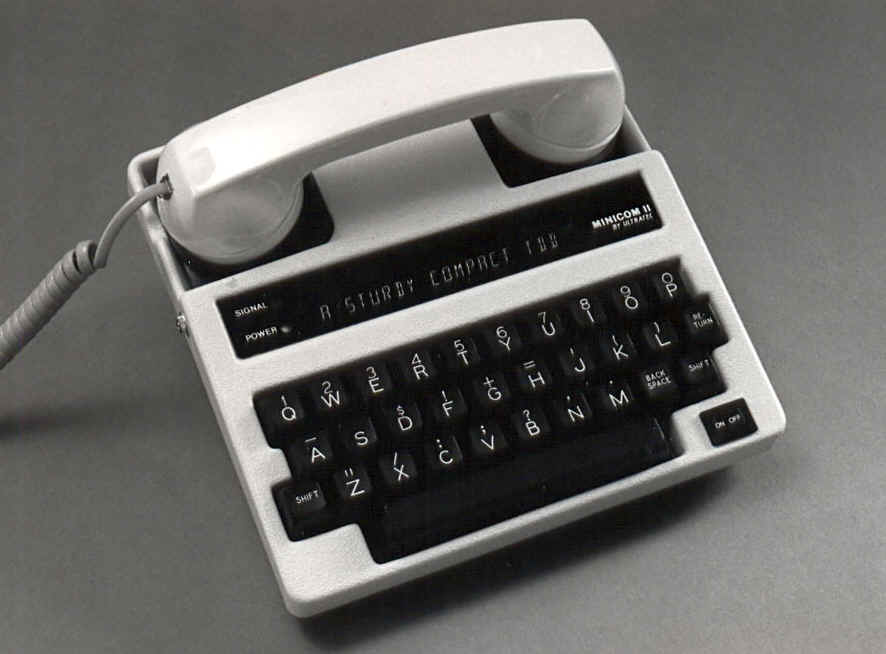
The Minicom II –
introduced in 1983 as a portable inexpensive TTY. Made it possible
for families to afford more than
one TTY, allowing them to communicate with friends and family in
different areas. (Photo courtesy
of Ultratec Inc.)
Recognizing that TTYs were a necessity, not a luxury, Ultratec changed the
entire market in 1981 by introducing the Minicom TTY for under $200. For the
first time ever, families could afford more than one TTY, allowing them to
communicate with sons and daughters away from home or friends and relatives in
different cities. The low-priced Minicom tremendously broadened the
opportunities for people to communicate with TTYs. Through a grassroots effort,
people who were deaf began selling Ultratec TTYs to their friends and families.
Thanks to their efforts, the number of households with TTYs grew immediately.
Many of these early TTY advocates, such as Bob Harris , Dot & Steve Brenner,
Robert Weitbrecht, Betty & Chuck Segler, and many others, established businesses
selling TTYs.

From the Tom Rule Collection At SMECC
1987 Ultratec introduces the SUPERCOM, the first
low-cost fully featured TTY.
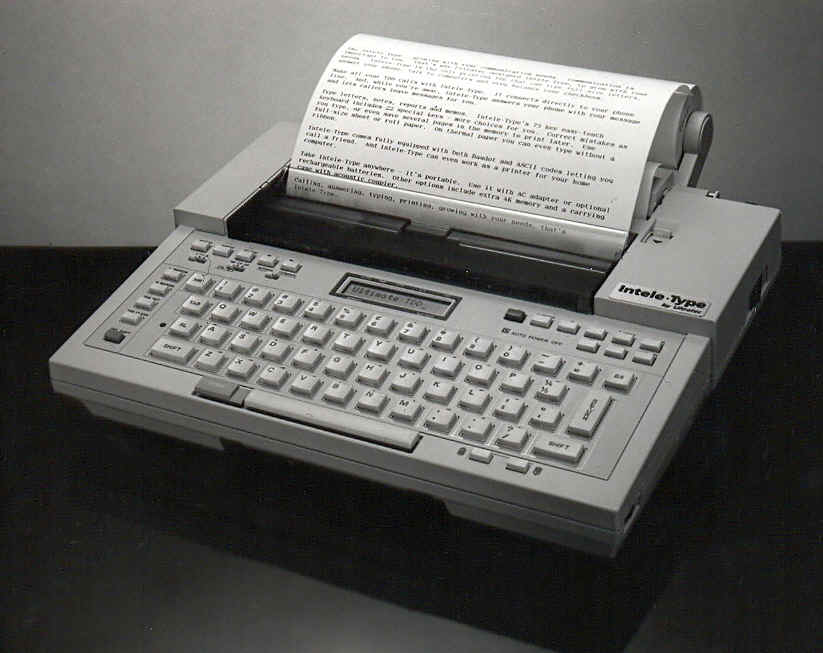
The Inteletype – introduced in 1984.
(Photo courtesy of Ultratec
Inc.)
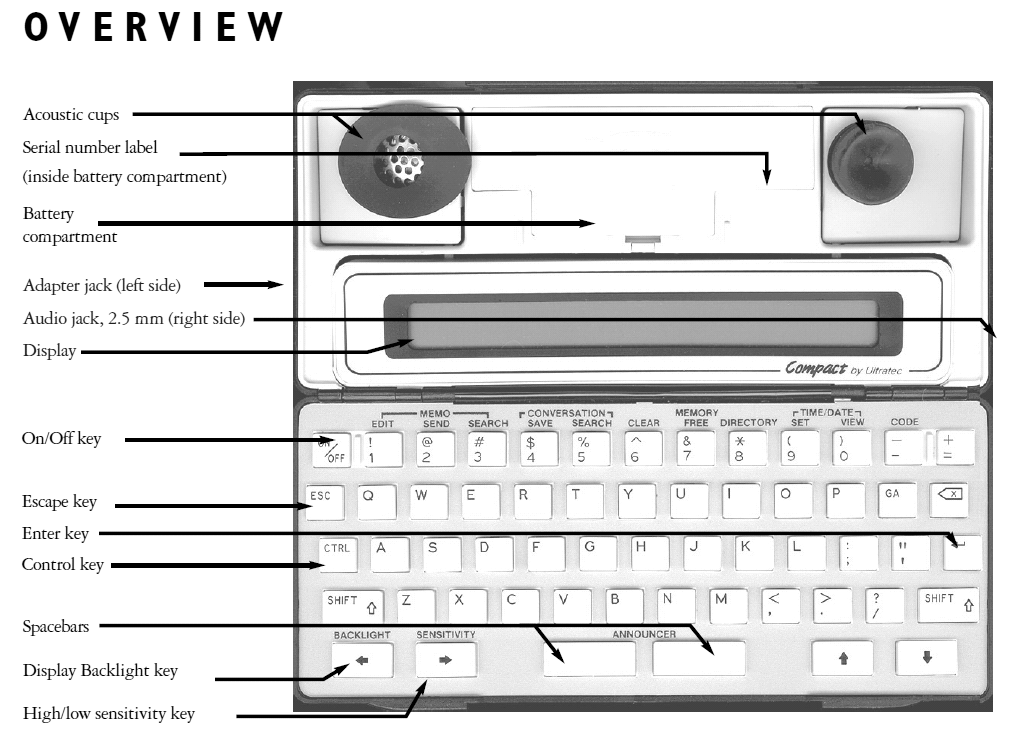
Ultratec COMPACT
(Photo courtesy of Ultratec Inc.)
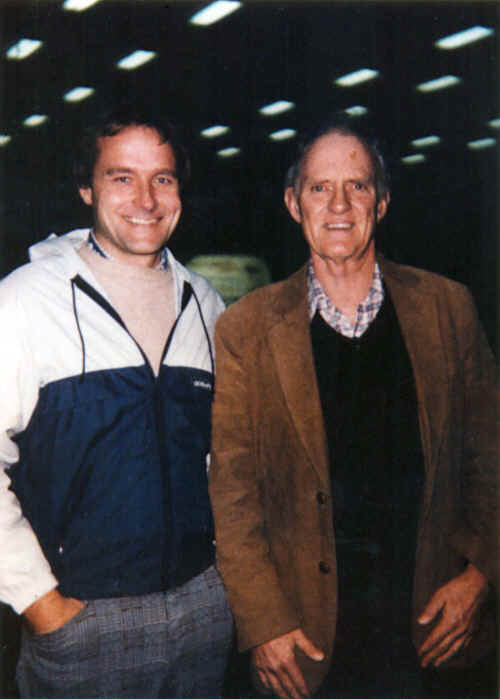
Dr. Robert Engelke, President of
Ultratec, with Dr. Robert Weitbrecht. (Photo
courtesy of Ultratec Inc.)
Dr. Weitbrecht invented the
modem that made TTY communications for the deaf possible. Dr.
Weitbrecht worked with Ultratec in the later part of his career, and
Ultratec's West Coast Distributor in California is still named after him (WCI
- Weitbrecht Communications, Inc.) Ultratec includes a picture and
acknowledges Dr. Weitbrecht's work and contributions to TTY development in
the user manual of every TTY Ultratec produces. (Photo
courtesy of Ultratec Inc.)
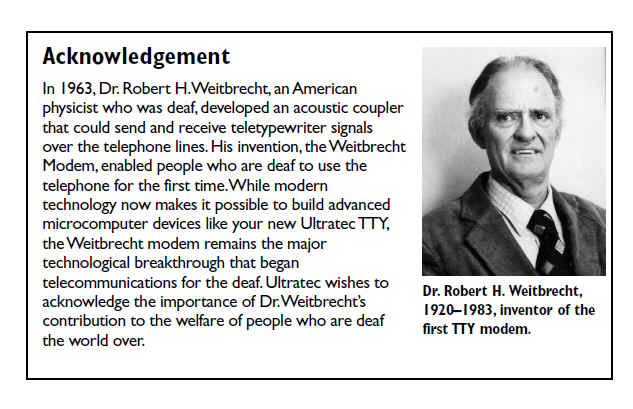
(Photo courtesy of Ultratec Inc.)
History of Ultratec
Technology and opportunities for TTY users have changed a great deal
over the past 30 years! Throughout this time, Ultratec
has led the way — inventing new technology to help people
communicate with over the phone.
In 1978, Robert Engelke, the founder of Ultratec, was an electrical
engineer designing devices to help people with communication disorders.
Through his friend Herb Pickell, a prominent member of the Wisconsin deaf
community at the time, Engelke became interested in improving text
communications for individuals who are deaf.
In the 1970s, TTYs cost between $650 and $1000, making them a luxury
item that very few could afford. Working out of the basement of his home,
Engelke started Ultratec to develop a low-cost TTY that people could use
more easily. The company's first TTY was the V.I.P. Communicator, a TTY
the size of a pocket calculator.
Engelke went to his first National
Association of the Deaf (NAD) Convention in 1978, meeting with people
to ask questions and test ideas. He asked TTY users to evaluate his work,
and made changes based on their comments (a process that continues at
Ultratec today). Impressed by Ultratec's commitment to improving TTYs,
other people active in the deaf community became part of the Ultratec
team. In 1980, Ultratec introduced the Superphone - a TTY that for the
first time included memory capabilities and ASCII. Best of all, it cost
under $500, which was a low price at the time.
Recognizing that TTYs were a necessity, not a luxury, Ultratec changed
the entire market in 1981 by introducing the Minicom
TTY for under $200. For the first time ever, families could afford
more than one TTY, allowing them to communicate with sons and daughters
away from home or friends and relatives in different cities. The
low-priced Minicom tremendously broadened the opportunities for people to
communicate with TTYs. Through a grassroots effort, people who were deaf
began selling Ultratec TTYs to their friends and families. Thanks to their
efforts, the number of households with TTYs grew immediately. Many of
these early TTY advocates, such as Bob
Harris , Dot & Steve Brenner, Robert Weitbrecht, Betty & Chuck
Segler, and many others, established businesses selling TTYs.
Ultratec has always involved people who are deaf in its TTY development
to be truly responsive to what people need. People wanted portability, so
Ultratec responded by designing the Compact/C.
People needed pay phone access, so Ultratec developed the Public
TTY. People wanted professional options, so Ultratec developed
the Superprint
4425 and deluxe Superprint
Pro80 series. Plus, Ultratec released a line of supporting
products, including Simplicity
signalers, TTY
detectors, and the CyrstalTone
loud phone ringer. By listening to what users need to be successful,
Ultratec has improved communication for everyone.
Building on its expertise in text telecommunications, Ultratec
developed the CapTel Captioned
Telephone, which gives telephone users the benefit of text captions
throughout their conversations. Now people with varying degrees of
hearing loss can continue enjoying the telephone without missing a beat.
Today, TTYs are available to people throughout the world. Ultratec is
recognized as the world’s largest manufacturer of text
telecommunications equipment. The company continues to be involved
in the deaf and hard of hearing communities at the state and national
level. Several of the people who work at Ultratec are deaf or hard of
hearing, or have family members who are deaf.
Just wait until you see what Ultratec does next….
From the Ultratech website 2012
|
|
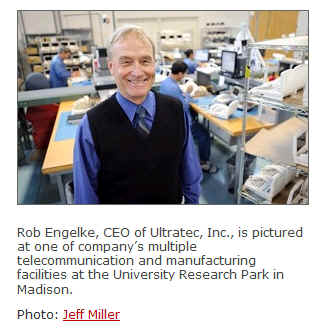
 “Today,
Ultratec is the premier company internationally in the area of deaf
telecommunication,” says Vanderheiden, a longtime friend.
“Not only did Rob reinvent (the TTY), he also invented an entirely
new form of communication for individuals who are hard of hearing,
called captioned telephony.”
“Today,
Ultratec is the premier company internationally in the area of deaf
telecommunication,” says Vanderheiden, a longtime friend.
“Not only did Rob reinvent (the TTY), he also invented an entirely
new form of communication for individuals who are hard of hearing,
called captioned telephony.”




















 Rob Engelke
- At reunion time-
Rob Engelke
- At reunion time-






